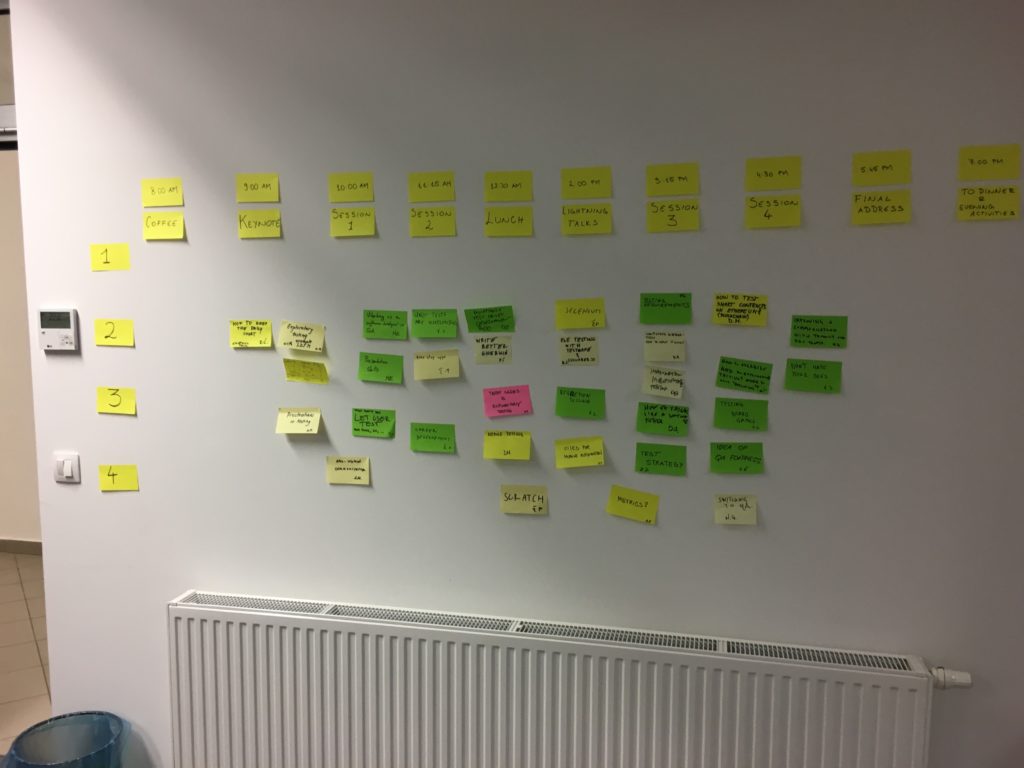
TL;DR
In the previous post, we learned five scheduling techniques. In this post, we will list the benefits of low tech scheduling tool, sticky notes. The post is based on a remarkable book written by Johanna Rothman, Manage It!
Benefits Over Electronic Solutions
The main benefit is visibility. You have a wall-size TV at your disposal, and that is the actual wall. The schedule in the form of sticky notes is always in front of the team. No licenses, no clutter display.
Basic Sticky Scheduling
The whole team should be part of the scheduling workshop. Each team member gets a pad of 3×5 inch yellow stickies and a pen. This is mandatory because team members are empowered with all the needed tools to start putting stickies on the wall. Inform them to use big letters. Otherwise, information from stickies won’t be visible from a five-meter distance.
Remember the proper way to tear-off the stickies:
First, put red milestone stickies on the wall. Then, team members should put their tasks on stickies (one task per sticky) and stick them anywhere on the wall—Reserve one part of the wall dedicated to orange question stickies.
Move away and give the team a space to discuss yellow stickies. Questions would arise, along with task preconditions and interconnection. When the team thinks that it is done, project manager work starts.
You will notice the following schedule features:
- only the first several weeks are scheduled. That is ok because scheduling is an iterative process.
- Long serial task chain, expected in serial project lifecycles, but not in agile. Find out are reasons for task seriality.
- Many long parallel tasks. Expected in agile, but not in other lifecycles.
Arrows
Draws arrows to connect related tasks. Better visibility is to connect stickies with thread.
Functional Groups
Instead of yellow stickies, assign to each functional team (developers, testers, DevOps, product owner) different colors. With horizontal lines for each week, this would visualize that functional groups slow down the project execution.
Features
You can organize your schedule around features. Each sticky does not represent a task, but deliverable. The feature consists of several deliverables. Make deliverable milestones, and you will know when the feature will be done.



